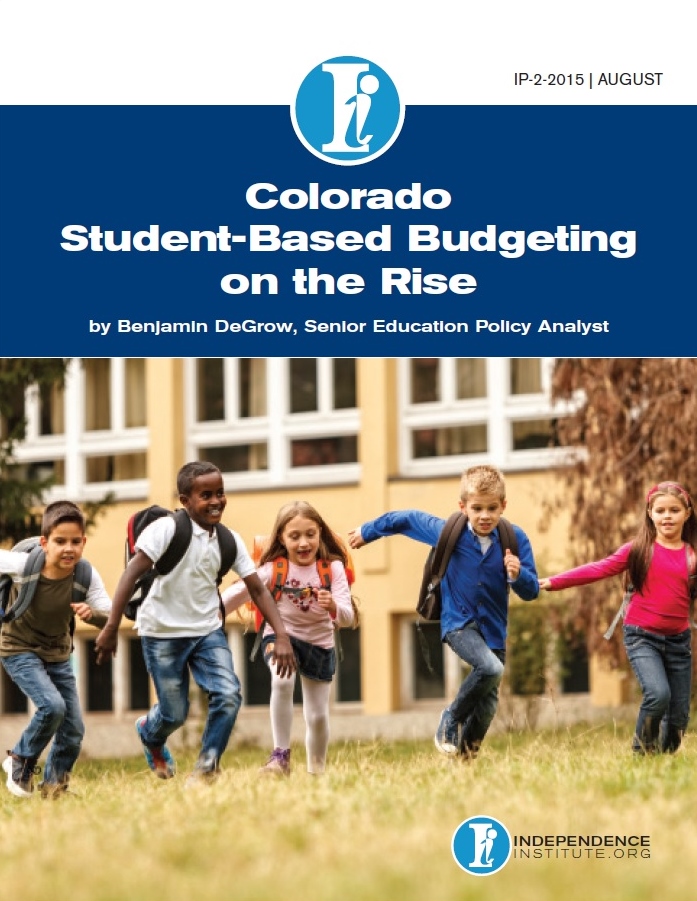Hey, I’ve got a crazy idea! Why not have school districts base their budgeting on students like me (or any student, for that matter)? It just makes sense to do it that way, right? Especially since the whole K-12 education enterprise is supposed to be about the kids.
It’s not that simple, however, and it’s not usually the case. Things like staffing formulas and seniority rules — not to mention bureaucratic traditions and old-fashioned accounting systems — generally rule the day. But in Colorado, the practice of Student-Based Budgeting is on the rise:
Through student-based budgeting (SBB), six school districts have prioritized student need over administrative convenience with a cost-effective approach that places more funds under individual school control.
This is from one of those long issue papers by my Education Policy Center friends that little me may never get around to reading cover to cover. SBB isn’t terribly glamorous, nor (like any other reform) is it a silver bullet. Even so, I’ve learned just enough to know that it’s something that very much should be on your radar. Plus, it has a fun and inspiring cover:
The fairly technical definition for SBB, according to author Ben DeGrow:
Such systems are most clearly identified by designating a significant share of per-pupil funding to follow each student to the school where he or she is being served. That money should reach the school in the form of actual dollars that can be spent flexibly at school leaders’ discretion, not as district programs or staffing formulas.
Within that definition there is some room for variety, as each of the six Colorado SBB districts has a somewhat different approach on the details. The star of the paper is the innovative District 49 in the Colorado Springs area (haven’t written about them in awhile, have I?). In fact, a telling anecdote in the paper might pique your interest:
To a degree rarely observed in K-12 public education, the innovative Falcon 49 school district has shifted resource decisions down closer to its school offices and classrooms. The headquarters of the POWER Zone, one of the four key cogs in the decentralized process, is a modest trailer on a middle school campus. The only bathroom facilities are in the nearby school building. Chief budget officer Brett Ridgway joked that the humble administrative setting represents proof that the district’s budgeting is truly student-based.
The other five districts, in order of appearance, are as follows:
- Poudre
- Denver
- Douglas County
- Adams 12
- Jefferson County
If you live in one of the six districts featured, you will want to take a look at least at the relevant section of the new paper. If you’re a leader in a school district that is doing old-fashioned budgeting but ought to be considering SBB, then you definitely should be reading it.
DeGrow spells out three particular advantages of this kind of system that add up to smarter spending for better results:
- Transparency: How many funds reach individual schools from the central office becomes clearer and easier to understand for staff, parents, and other community members.
- Equity: As D49 chief business officer Brett Ridgway says, it’s “about treating every student as they need to be treated,” not a one-size-fits-all approach to spending and budgeting.
- Flexibility: School leaders and communities have greater power and responsibility to make more program decisions with allocated funds, maybe even save some for special priorities.
What can I say? It may not seem easy to do, but just like we should be communicating to students, that’s not an excuse to avoid aiming higher. Simply put, more school districts should be doing Student-Based Budgeting!








